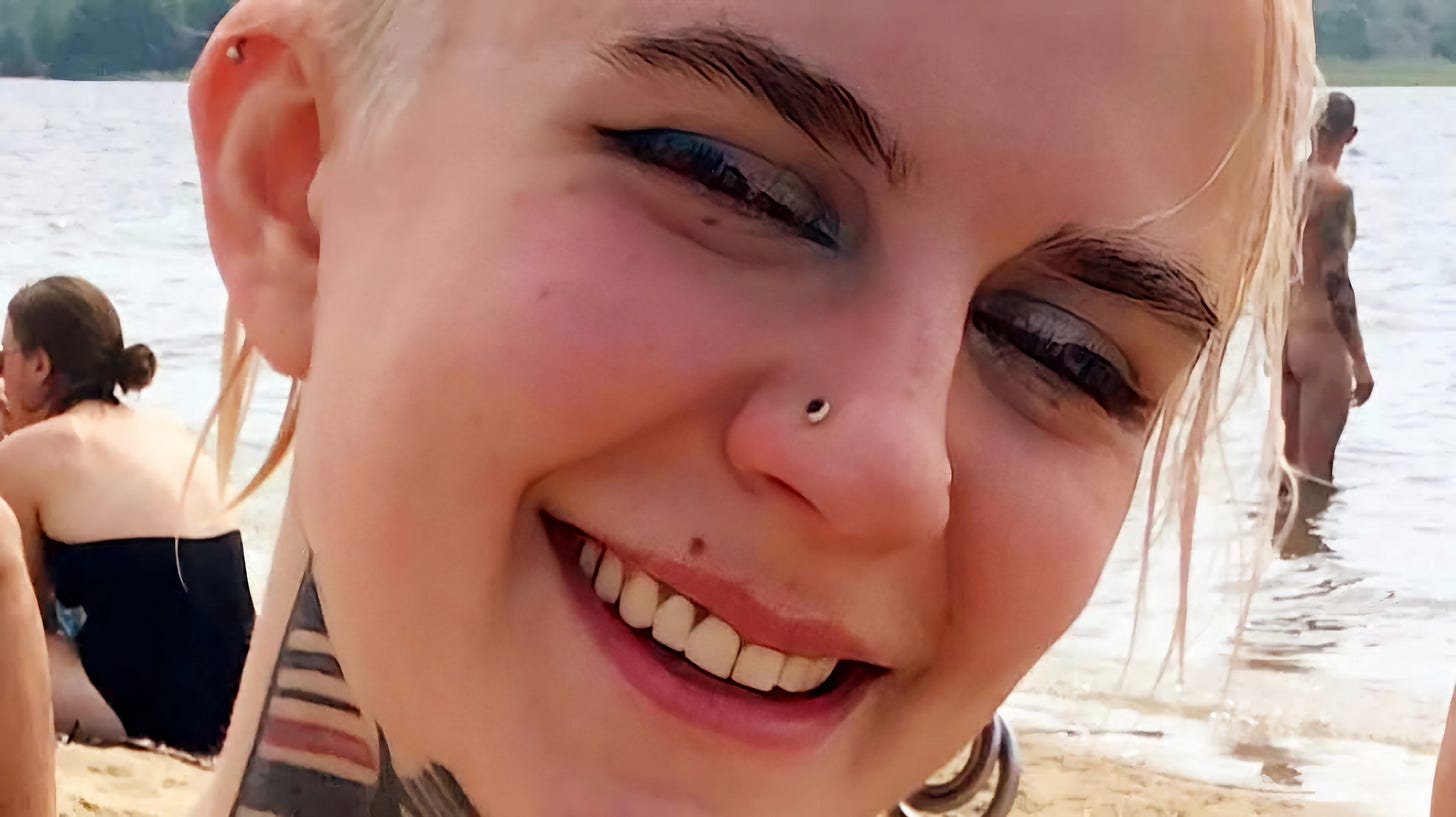Jessica Brösche didn’t come to America to get waterboarded by fluorescent lights. She came to visit a friend in Los Angeles. Instead, she was thrown in solitary confinement like a war criminal, because the United States can’t tell the difference between a tourist and a threat—but it sure knows how to cage both.
This is not a story about border security. This is a story about how ICE humiliates people for sport and gets away with it, every single day.
“WELCOME TO AMERICA. NOW HAND OVER YOUR DIGNITY.”
Jessica Brösche is a 29-year-old tattoo artist from Berlin—cheerful, covered in ink, and evidently dangerous enough to warrant over six weeks in a U.S. immigration prison. She flew to Los Angeles in January 2025 under the Visa Waiver Program to visit her friend Nikita Lofving. A quick trip to Tijuana followed. But when she tried to return via the San Ysidro Port of Entry, she was flagged.
Her crime? Carrying tattoo equipment and having an Instagram account. Customs officers decided that meant she must be planning to work illegally. No proof. No paycheck. No evidence. Just vibes—and the unmistakable stench of xenophobic bureaucracy.
They interrogated her for hours. Denied her a translator. Confiscated her phone. Then they dragged her into ICE custody and threw her into the Otay Mesa Detention Center like she’d smuggled nuclear secrets in her carry-on.
EIGHT DAYS IN THE BOX. SIX WEEKS IN LIMBO.
Brösche spent eight full days in solitary confinement, under buzzing fluorescent lights, fed barely edible food, denied basic hygiene, and given one shower. Screams echoed down the hallway. Other women were crying. Some were vomiting. Some were screaming into the void. So was she.
And after that? ICE kept her locked up for another five weeks—without trial, without transparency, and without a single shred of accountability. This wasn’t prison—it was a stress position disguised as policy. And ICE wasn’t confused. It was doing exactly what it was designed to do: dehumanize, disorient, and dominate.
Brösche later called it “a horror movie.” ICE called it “routine.”
That should haunt every one of us.
HOW TO RUIN A LIFE WITH PAPERWORK
Let’s be crystal clear: Jessica Brösche committed no crime. She misunderstood the fine print of her prior visa status. There was no scheme, no fraud, no plan to break the law. And even if there had been? It would still be indefensible to treat someone this way for what amounts to an immigration technicality.
But that’s how the machine works. You land on the wrong day, with the wrong bag, at the wrong airport—and suddenly, you’re not a human being. You’re a file number. A quota stat. A body to disappear into a cell.
And ICE? ICE thrives on this. On the spectacle. On the silence. On the unchecked power to break people before breakfast.
DEPORTED AND DISPOSABLE
After more than six weeks of psychological warfare, Brösche was deported to Germany in March 2025. She was never charged with a crime. Never allowed to defend herself. Never given a chance to speak freely or be seen as anything more than a problem to eliminate.
Now back in Berlin, she’s trying to recover. She’s speaking out. But what she really wants is for people to understand that what happened to her wasn’t an accident—it was policy. A taxpayer-funded horror show dressed up in red, white, and blue.
ICE ISN’T BROKEN. IT’S OPERATING PERFECTLY.
This wasn’t a rogue officer. This wasn’t a one-off mistake. This was the system working as intended—grinding up a young woman for daring to enter the country with a dream, a passport, and a bag of ink.
ICE doesn’t care who you are. Artist or activist. Student or survivor. If you make them nervous, they’ll throw you in a cage and call it protocol.
And the scariest part? They won’t just do it again. They already are.
THE FINAL STAMP
Jessica Brösche called it a horror movie. ICE called it a checklist.
And that—right there—is the horror. Not that this happened to her. But that it’s designed to happen. That it’s rehearsed, approved, and printed into the policy manual like a boarding pass to hell.
So don’t tell us to “check our visas.” Check your humanity. Because the next time this machine spins its wheel, it won’t be a tattoo artist from Berlin.
It’ll be someone who looks just like you.
Support independent journalism. Share this story. Expose the machine.
This post has been syndicated from Closer to the Edge, where it was published under this address.

